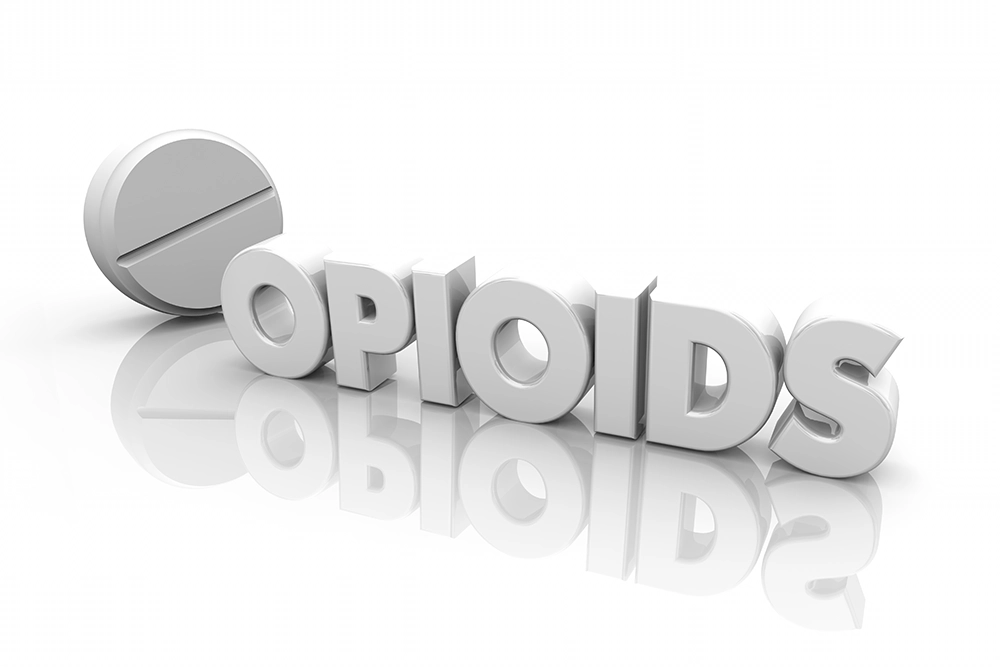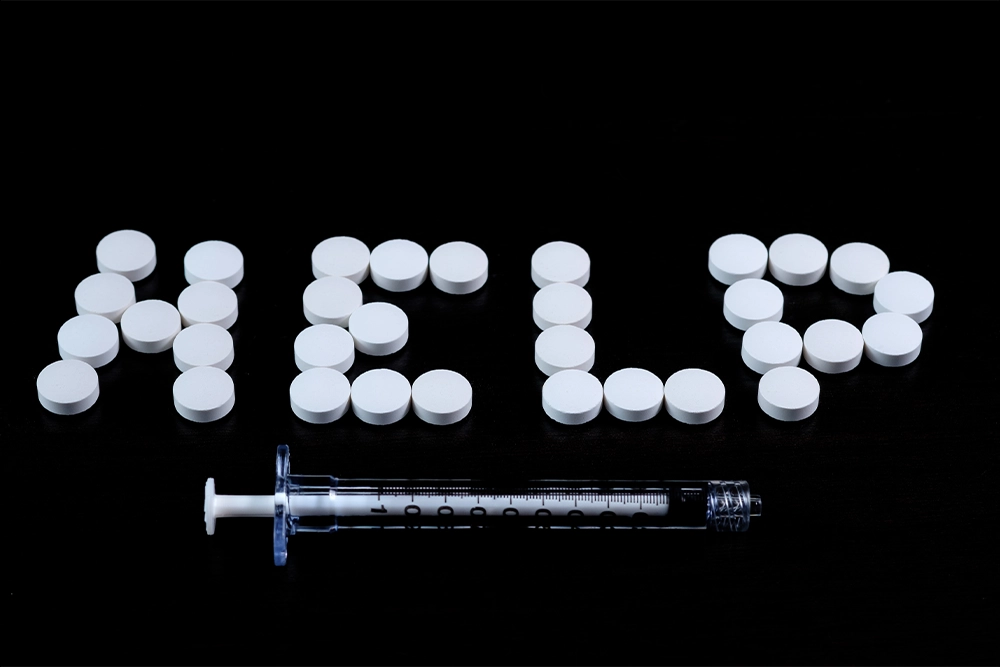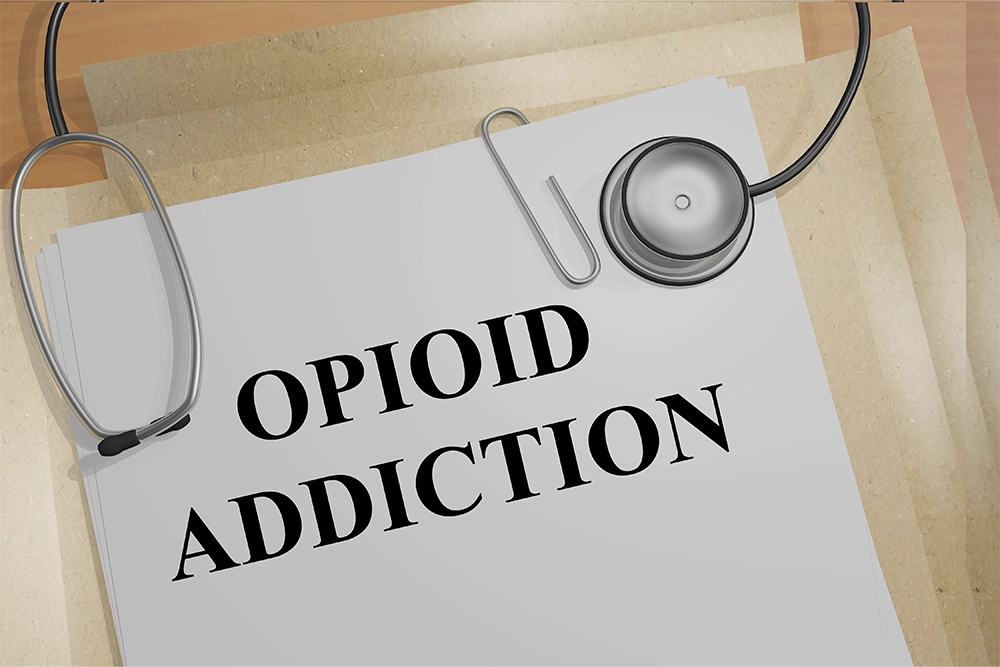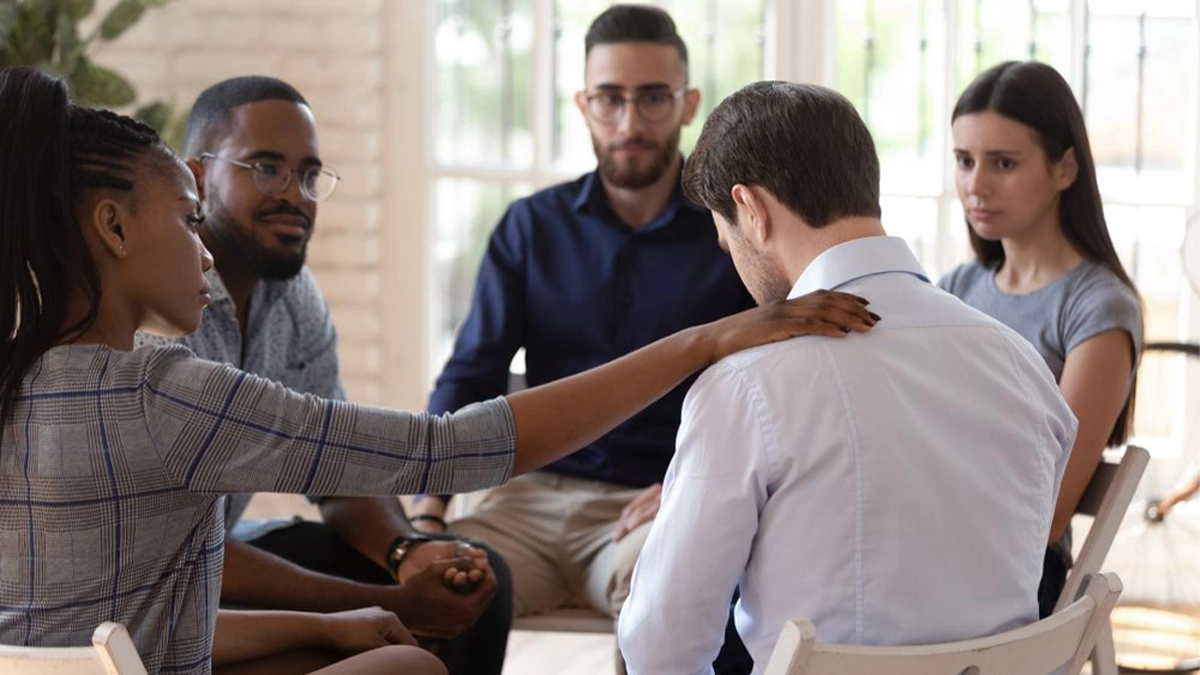Opioid addiction is a very serious matter. Many people become dependent on opioid’s ability to create euphoric feelings and relieve them of the pain they are experiencing. But while this type of drug is meant to be distributed medicinally for pain reduction, many use it as a recreational drug that can become very dangerous to their health. If you suspect that a friend or family member is getting addicted to opioids, it’s important that you know what to do to help them. Here, you’ll learn about what opioids are, the signs of dependence on it, and how to help your loved one with opioid addiction.
What are Opioids?
Opioids are also called narcotics. They are prescription meds that are meant to treat severe and persistent pain. Opioids are taken as prescribed by people who have chronic backaches or headaches and other pain caused by injury or accidents. Also, recovering patients who have just gone through surgery take them. People with cancer who are experiencing a lot of pain are also prescribed with opioids.
There are various types of opioids. Some of the names of these opioids are Morphine, Oxymorphone, Oxycodone, Hydrocodone, Fentanyl, and Codeine. You may already have heard of brands such as Vicodin, Percocet, and OxyContin. These are opioids as well. Heroin is also an opioid but it has not been sanctioned for any type of medical use.
The type of opioid which the doctor prescribes to a patient has a particular level of strength. It may also be taken in different ways. This depends on the medical case, the situation, and the kind of pain that the patient is experiencing.
Most of the opioids are in the form of pills. However, some may be given to the patient through IV or injection. Opioids are known to be very effective in managing pain. However, it does have side effects and there are risks involved where the patient may become addicted to it. That’s why it is important to follow the doctor’s instructions when taking opioids.

Understanding How Opioids Work
When a person takes opioids, the medication works when they begin to attach to opioid receptors found on the nerve cells of the brain, gut, spinal cord, as well as other important body parts. At this point, the opioids block the pain messages that are being sent to the person’s brain from various parts of the body.
Opioids are very effective in relieving pain. However, there is a risk of getting addicted to it. The chances for addicted are high for people who use them to manage their chronic pain. Some of the side effects of using opioids are nausea, constipation, and sleepiness.
When opioids are taken more than the prescribed dose or frequency, then there can be side effects that are harmful to the person’s health. Overdose may happen and when signs of opioid overdose are observed, the person must be immediately taken to the emergency room.
When you observe that your loved one who is taking opioids has shallow breathing and slow heart rate, this can be signs of an opioid overdose. If they have lost consciousness, then immediately call an ambulance and take them to the hospital for proper treatment. When the individual stops taking opioids abruptly, they may experience insomnia or jittery nerves. Always consult the doctor first before making any changes to the dosage and frequency of taking opioids.
Safety Tips for Opioid Use
If you have a loved one who has been prescribed with opioids, it is important that they know about the safety tips that we’ll share here. Make sure that you talk to your friend or family member about these tips so that they can be aware of the do’s and don’ts of opioid use.
Discuss with the Doctor
Before taking opioids or agreeing to have a plan for pain management that involves opioids, the patient should have been able to give ample consideration for alternatives that do not have addiction risks.
If the doctor says that taking opioids is the best option, then the patient should ask about the ways on how to minimize the side effects and the risks that come with taking them. To do this, the person should be completely honest with the doctor and talk about their medical conditions. For example, if they’ve taken opioids in the past and felt that they easily build a dependence on them, then the doctor ought to know that.
Another important information to tell the doctor is if the patient has any history of alcohol or drug addiction. If this is the case, then there have got to be precautions in prescribing opioids because people who had addiction histories are more likely to be vulnerable to drug abuse.
Observe Side Effects
Opioids may have side effects that may range from mild to severe. Mild side effects include constipation and sleepiness. Severe side effects of opioids may include slow heart rate, shallow breathing, and there are cases when the patient can lose consciousness. Usually, these severe side effects are already signs of an opioid overdose.
As someone who has a loved one using opioids, be keen in observing if these symptoms are present. Talk to the doctor on the things you can do so that you can prevent these extreme situations from happening. If you suspect an overdose, immediately take your loved one to the hospital or call an ambulance.
Follow the Doctor’s Instructions
When taking the medications, the patient should take them as prescribed. The dosage and frequency should be precise. If they are taking other medications, then they should tell their doctor about it and ask if it is safe to take opioids while also taking those other medications.
Ask about Alternatives
There are several alternatives for pain management. Some of them include combining opioids with other treatments that the doctor can recommend. It is possible that the patient can have a lower dosage if the pain is treated through combination therapy.
There are treatments for pain that are called non-drug therapies. Acupuncture, massage, and meditation are some of them. Patients may also consider interventional therapies like nerve blocks and surgical procedures. In such a procedure, the nerves that are responsible for the pain are eliminated. Do talk to the doctor on the best option available.
Implants or injections can be considered by people who have nerve pain or muscle spasms. It may help to short-circuit the pain. With chronic pain, a device may be implanted on the patients back, blocking the pain when it sends electric pulses to the spinal cord and nerves. This is called spinal cord stimulation.
How to Stop Taking Opioids?
When a patient decides to stop taking the prescribed opioids all of a sudden, he or she can experience symptoms like insomnia and jittery nerves. To avoid this from happening, the patient should talk to the doctor about wanting to stop so that the medications can be tapered until such time that the medication can be stopped completely.
By consulting the doctor first, the patient can have an individualized plan for tapering the medication. This will be able to minimize the withdrawal symptoms of opioids. The doctor can also monitor the patient if withdrawal symptoms arise during the process. The patient can also be guided properly and be given ample support during this time.
When cutting back on opioids, the patient has to know what he or she should expect. For example, there may be a chance that the individual may experience tremors, diarrhea, vomiting, abdominal pain, insomnia, and anxiety.
When the opioid medication is tapered properly, there will be lesser chances for these withdrawal symptoms to emerge. That’s why it is vital that the patient talks to the doctor so that he or she may be given the right pacing for tapering the drug. Eventually, the patient will be able to completely stop opioid use for pain management.
What is Opioid Addiction?
Opioid addiction is considered to be a chronic disease. It can last for a long time and can cause many economic, social, and health problems to the person addicted to it. Being a prescription medication for pain that is severe and chronic, opioids can make a person experience relief from pain and euphoria.
When a person is addicted to opioids, they feel urges to use the drug even when they do not need to take them for medical purposes already. Opioids have a high potential for causing compulsion in certain individuals, even when the meds are endorsed fittingly and taken as coordinated.
Numerous opioids that are prescribed are abused or redirected to other people. People who become dependent may organize getting and utilizing these medications, frequently affecting their personal and professional connections and other relations. It is really not clear as to why there are people who are bound to wind up becoming more dependent on opioids than others.
Opioids have the power to change the way that the brain works. It can even lead to tolerance on the drug which means that a person may find it necessary to increase the dose that he or she is taking just to get the same feeling. When a person takes opioids for a stretch of time, he or she may become dependent on it. And when they stop, they may experience psychological and physical withdrawal symptoms.
Dependence on opioids is not necessarily addiction. While there are those who become dependent because they’ve been taking opioids for a long time, there’s only a number of people in that group who become addicted. They experience a craving for the drug and the feeling that they need it even when in reality, the drug is no longer necessary. This is the behaviours that are characteristics of addiction.
With opioid addiction, a person may face perilous medical issues, including the danger of overdose. An overdose happens when high dosages of the opioids cause breathing to become abnormal. The person may become unconscious and die if the overdose isn’t dealt with right away. Both legal and illicit opioids convey a danger of overdose if an individual takes a lot of the medication, or if opioids are taken together with different medications especially sedatives called benzodiazepines.
Causes of Opioid Addiction
The causes as to why opioid addiction happens are complex. Usually, there is a combination of environmental and genetic factors. Even the lifestyle of the person addicted to opioids should be accounted for.
A number of our genes are thought to be important players when it comes to being vulnerable to opioid addiction. These genes are in what is called the endogenous opioid system. This system helps in regulating reward, pain, as well as addictive behaviours. It is made up of opioid substances that are naturally produced in the body. They are known as endogenous opioids.
The opioids that are not produced inside our bodies is known as exogenous opioids. These are the opioids that are taken as medications for pain. Another example is an illicit drug called heroin. These opioids also affect the endogenous opioid system because they can affect the receptors of the system.
There are differences in our genes that give instructions to our body when it comes to creating opioid receptors. This genetic variation can be a risk factor for a person becoming addicted to opioids. Studies posit that such differences in the function and structure of the receptors can influence the way that the body reacts to opioids.
The mu (μ) opioid receptor, which can be generated in the OPRM1 gene, is the main receptor for many opioid drugs. Frequent variants in the OPRM1 gene appear to affect the way the body reacts to opioids, including the amount of an opioid medication required to achieve pain relief. At least in certain populations, these versions also have been related to the possibility of opioid addiction.
Variations in enzymes involved in different facets of nervous system function also have been examined as risk factors for opioid addiction. A few of those enzymes play roles in many different neurotransmitter pathways, where compounds called neurotransmitters and their receptors relay signals from 1 neuron to another.
Other enzymes provide instructions for proteins which help control the development, survival, and specialty (distinction) of neurons. Though variations in many of these genes are linked with opioid addiction, it’s uncertain how these genetic changes influence the manner by which the nervous system reacts to opioids.
Opioid dependence is an intricate illness, and nongenetic factors also play a crucial role. Factors which have been proven to boost the possibility of opioid addiction incorporate a history of substance abuse; depression or other psychiatric disorders; youth neglect or abuse; and specific character traits, such as impulsivity and sensation-seeking.
Living in poverty and also in a rural region, linking with other people who abuse opioids or other materials, and with easy access to illegal or prescription opioids also lead to an individual’s risk of opioid dependence.
Signs of Opioid Addiction
Opioids are able to make your mind and body feel the medication is essential for survival. As you learn how to tolerate the dose you have been prescribed, you might discover that you need more drugs to alleviate the pain or attain well-being, which may result in opioid dependence. Addiction takes hold of our brains in many manners and is a lot more complicated and less forgiving than a lot of men and women realize.

How do you prevent dependence to opioids?
In the event that you or a loved one is contemplating taking opioids to control pain, then it’s essential to speak to a doctor anesthesiologist or other pain medication expert about using them and researching alternative choices if necessary. Talk to the doctor anesthesiologist or a different doctor to use opioids more sensibly and safely and research what pain management choices might work for you.
What are the indicators of an addiction?
Individuals addicted to drugs can change their behaviour such as:
- Mixing with various groups of individuals or having new friends with bad habits
- Spending some time and avoiding time together with family and good friends
- Being very weary and unhappy
- Being too energetic, talking quickly and stating things that don’t make sense
- Getting nervous or cranky
- Instantly changing moods
- Sleeping in odd hours
- Missing important appointments
- Attending school or work in an erratic schedule
- Experiencing financial hardship
In the event that your loved one is prepared to look for help for an addiction, the first step is to locate a doctor or other caregiver who can provide help. Consult your doctor for a referral to a medical practitioner in addiction medication. If a loved one is prepared to look for help from an addiction, the first step is to locate a doctor or other caregiver who can provide help.
If you’re encouraging a friend or loved one in beating dependence, here are the things that you can do:
- Assure your friend or loved one that dependence can be handled successfully, but admit that it might take several attempts at therapy to discover the ideal approach.
- If your friend or loved one fails to find assistance, a confrontational “intervention” isn’t suggested. These experiences can escalate to violence or backfire in different manners. Attempt to convince somebody to get help from a doctor.
Which exactly are opioid withdrawal symptoms and how do you find relief from them?
Opioid withdrawal symptoms may but will not necessarily include a number of these:
- Drug cravings
- Anxiety/irritability
- Insomnia
- Abdominal pain
- Vomiting
- Diarrhea
- Feeling chilly
The most effective approach to relieve withdrawal symptoms is via medically supervised therapy that normally includes medications, individual counselling and support. These medicines can also be utilized as long-term care medicine for opioid addiction.
Additionally, a medicine known as clonidine may be used during withdrawal to help lessen stress, agitation, muscle pains, sweating, runny nose and cramping. It doesn’t help decrease cravings though. The doctor may also prescribe drugs to treat nausea and diarrhea and aid with insomnia.
What are the indicators of an opioid overdose?
- Extreme sleepiness
- Inability to Speak
- Blue skin colour and dark-coloured lips
How should you react to an opioid overdose?
If you think a person might be suffering from an opioid overdose, then consider the following actions immediately:
Gently tap, shake and yell at somebody to acquire a response. If you don’t get a reply, rub your knuckles on the individual’s breastbone. If the person reacts, keep the individual awake. And call an ambulance should you get little if any response.
If gently tapping, shaking and yelling in the Individual or rubbing against your knuckles on the individual’s breastbone doesn’t evoke an answer (per Step 1 above), consider the following:
Call the ambulance. Give two quick breaths to begin and then a powerful breath every 5 minutes to the person. If the individual doesn’t have a heartbeat or isn’t breathing, perform CPR.
While waiting for emergency assistance, remain with the individual. If you have to leave the individual alone or nausea occurs, place the person in recovery position — about the individual’s side, together with the opposite hand behind the head, mouth facing the side and down, along with top leg onto the ground to keep the individual from rolling onto the gut.
What’s naloxone and how can it assist having an overdose?
Should you just happen to possess naloxone when reacting to an overdose, call the ambulance and administer the medicine in accordance with the package directions. Naloxone is available from your doctor or in pharmacies as an over the counter medication.
How should you store and get rid of opioids to safeguard family members?
If your loved one is taking opioids, then they are not the sole person in your family who’s at risk of abuse, addiction and overdose. Other members of your family, including children, are also vulnerable. Here is the way to protect an accidental overdose:
- Always keep opioids in a safe and protected location.
- Don’t take prescription bottles in the medicine cabinet.
- Also hide the medicine from others, especially young children. Kids sometimes confuse drugs for candy and wind up consuming them which may result in an overdose. Other relatives and people may also find prescription drugs in the home and use them.
- Never discuss your own prescriptions.
- Do not throw opioids to the garbage. Improper disposal of prescription medications may result in other individuals taking and finding them.
If you have leftover or expired prescription drugs, follow these medication disposal steps:
- Eliminate the prescription label which has your name and other identifying info.
- Check with your municipal garbage and recycling centres about accepted disposal drop-off choices in your area, like police stations.
- Search for pharmacies and healthcare practices offering drop-off boxes or market especially designed medication disposal envelopes which you could seal and email into an approved centre.
- Flush the medicine down the toilet or blend it with grime, kitty litter or coffee grounds prior to throwing it into the garbage.
Related article: The Early Signs of Opioid Abuse and Addiction
How to Help Your Loved One with Opioid Addiction
Even though it can be evident that your loved one needs help to overcome their dependence, approaching them in their opioid abuse could be challenging. First of all, it is very important to approach your friend or family member in a caring way and let them know that you’re concerned for their safety and well-being.
Rather than being accusatory, highlight the pain and damages that the drug use has caused in their life (in addition to the lives of other people about them) and use certain examples to illustrate the point.
Possessing a one-on-one talk with your loved one might be sufficient to make them go to medication detox and start their opioid addiction therapy. On the other hand, there may be cases where this might not be adequate. It’s not unusual for an addict to completely deny their drug dependence or become defensive when approached. If that is true with your loved one, you might wish to consider seeking the assistance of a professional interventionist.
An interventionist is somebody that has been trained to arrange and host set interventions among family and friends in a bid to help a person with opioid addiction to enroll in a detox facility and start treatment. A specialist interventionist will have the ability to assist you to design a group meeting that’s efficient, effective, and tailored for your loved one.
Opioid Addiction Treatments
Fixing an addiction to opioids usually involves treatment, drugs, support groups and lifestyle modifications. It’s highly suggested that the person who wants to recover from addiction be enrolled in a detox facility.
There, a group of specialists that are trained to oversee and monitor your loved one can effectively do so through the procedure for opioid detoxification. Opioid withdrawal can be very difficult and may for last weeks. But doctors can prescribe drugs that could lessen discomfort and help the body gradually readjust.
Therapy is also an essential facet for handling the underlying behaviours that resulted in an individual’s opioid usage. Therapy may also tackle co-occurring ailments including depression, which is also called dual diagnosis.
There are many rehabs offering opioid addiction therapy. People searching for a rehab ought to think about their particular requirements and be certain that the treatment centre is equipped to assist them.
Inpatient Rehab
Inpatient rehabilitation eradicates the external environmental and societal elements which make it more challenging to attain sobriety. Every rehabilitation is somewhat different from the sorts of activities they provide. Some concentrate on bodily in addition to mental health, encouraging daily exercise. Some are far more exciting, scheduling trekking trips and rock climbing. Others tend to be more relaxed and might provide a more lavish treatment setting.
Detox is also a significant part of inpatient rehab. Since opioid withdrawal symptoms may be extreme, lots of individuals would use the particular medication prescribed to them to alleviate their pain. Medically supervised detox aid to reduce withdrawal symptoms, which is frequently accomplished with the support of medicine.
After patients complete inpatient rehabilitation, they’re encouraged to continue therapy. Aftercare is frequently combined with outpatient therapy and alumni service groups.
Opioid Addiction Medications
Medical direction is important in assisting to wean people off of opioids by helping them to reduce cravings and stop future usage. Some drugs commonly prescribed to individuals hooked on opioids include:
Buprenorphine
Using Buprenorphine may be dangerous for a person who isn’t entirely prepared to remain clean from opioids. If a person were to use Buprenorphine, they’re at an elevated risk of having severe withdrawal symptoms and potentially overdose because of needing to utilize more of this medication.
Buprenorphine is frequently used during severe withdrawal to relieve the signs of opioid withdrawal. Nonetheless, it’s also used for medication-assisted treatment (MAT). It may be habit-forming, so it ought to be used with care and taken right as prescribed by a doctor.
Methadone
Although more powerful than buprenorphine, methadone basically works in precisely the exact same manner. Frequently known as the name Dolophine, Methadone is itself an opioid as well as its usage is controversial because it can build up in your system if taken too frequently and in addition, it has very addictive potential.
It’s occasionally used for short-term detox functions but was demonstrated to be effective for long term drugs assisted treatment. Methadone maintenance treatment makes it simpler to maintain abstinence to long term recovery as it helps reduce cravings. Since methadone may be habit-forming, it ought to be used with care and accepted only as prescribed by a doctor.
Naltrexone
Also prescribed in treating sleeplessness, Naltrexone helps stop opioids from functioning from your system by preventing it from hitting the opioid receptors within the body. Also called Revia or even Vivitrol, Naltrexone makes the body indifferent to the effects of opioids. This way, the person won’t be able to attain the euphoric feeling that they want to get out of taking opioids.
Suboxone
Suboxone can be quite harmful to take if a person is onto it and decides to attempt to find high with opioids. The person may take larger and larger amounts of opioids to reach a euphoric state, but it might lead to an increased chance of overdose which may be fatal if not treated immediately.
MAT for Opioid Addiction
If a person becomes dependent on the prescribed opioids, they might feel ill whenever there are not any opioids within their system. This feeling is a symptom of withdrawal. By helping reduce cravings and withdrawal, medication-assisted therapy can help someone stop thinking about opioids. This permits your loved one to concentrate on returning to a healthy and better way of life.
Taking medicine for opioid dependence is similar to taking drugs for another chronic illness, like diabetes or asthma. When it’s used in line with the physician’s directions, the medication won’t produce a new dependence.
Therapies for Opioid Addiction
Besides tailoring medications to tackle withdrawal and cravings, a thorough treatment strategy will also incorporate treatment or counselling to deal with behavioural problems, support healing and protect against relapse. Family therapy is particularly effective for teenagers and young adults to deal with substance use together with other difficulties.
CBT
Cognitive Behavioural Therapy or CBT is a combination treatment that mixes cognitive and behavioural therapy to fight drug addiction and/or other mental health disorders. It is a goal-oriented approach which works to correct unhelpful thoughts and behaviours and turn them into optimistic, effective attitudes to promote positive change. Patients generally work one-on-one with a therapist, which helps to create a program that is unique to the needs of the individual.
12-Step Programs
Initially created by the founders of Alcoholics Anonymous, the 12-step program has flourished to help individuals with all kinds of addictions. Each individual must make their way through the 12 steps of the program, only moving forward when they have completed the previous step to its full extent.
The language used in the program emphasizes the presence of God, as each individual sees him and their relationship with him. The steps include recognizing the addiction, making the decision to change, making amends with people the addict has hurt and so on until they have reached the last step.
Motivational Incentives
This kind of addiction treatment aims to make treatment more attractive to users by offering positive reinforcement when constructive steps are made. This is often an ideal form of treatment when the individual is having a hard time conforming to other options.
For opioid addicts, they may have to provide a urine sample or have a drug test done on-site, to ensure that they’re staying on the program. Immediate incentives should be provided, such as gift cards, vouchers, etc.
Psychotherapy
Not every user understands why or how they became addicted to an opioid. With psychotherapy, users can meet one-on-one with a therapist to recognize why they use and what kind of situations increase their likelihood of using.
Meetings are set up consistently, so that therapists can assess the progress of their patient, and whether or not their individualized treatment is helping. This approach is a means of talking through problems and having the recovering user open up about their drug use and personal issues.
Takeaway
Opioid addiction treatments are often the most successful if they are used in combination with other treatments. Individuals who are fighting an addiction should keep in mind that they may need to try a few different options before they find the combination of treatments that work best for them. They also need encouragement, guidance, and support from their family and good friends. If you have a loved one with opioid addiction, keep on encouraging and supporting them to seek help and proper treatment.
Related article: 7 Myths About Opioid Addiction







